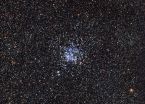Fat chats: The good, the bad and the ugly comments
Study analyzes how people chat about weight on different social media platforms
2014-10-01
(Press-News.org) Cyberbullying and hurtful 'fat jokes' are disturbingly prevalent in the social media environment, especially on Twitter, says Wen-ying Sylvia Chou of the National Institutes of Health in the US. Chou is lead author of a study in Springer's journal Translational Behavioral Medicine which analyzed well over a million social media posts and comments about weight matters. However, the researchers were also happy to find that the news was not all bad: many instances of support and advice were also observed, especially on blogs and forums.
The study is one of the first to analyze how weight is discussed on various social media channels such as blogs, Twitter, Facebook, forums, Flickr, and YouTube. Chou and co-author Abby Prestin analyzed 1.37 million posts in the sixty days between 23 January and 23 March 2012, all containing the keywords 'fat', 'obese,' 'obesity' or 'overweight.' Compared to 'obesity' and 'overweight,' 'fat' is most often used in colloquial conversations—92 percent of the cases—and it often appears together with words with negative, derogatory or misogynist connotations. On the other hand, dialogues containing the terms 'obesity' and 'overweight' generally include more information, such as hyperlinks to news articles or healthcare agency websites.
Although blogs and forums produce a small volume of posts, they can support in-depth, sustained online exchanges about weight-related topics, including helpful information about healthy eating and weight management. In contrast, 1.25 million or 91 percent of all the relevant posts analyzed are found on Twitter. One in every three of the top relevant retweets contains 'fat jokes' or music lyrics which especially stereotype women of certain physiques. Chou's study suggests that Twitter may be "a unique channel that potentially perpetuates and enables terse and insensitive flaming or aggressive cyberbullying."
Taken together, a large proportion of user-generated content on social media reflects and reinforces weight stigma. Pervasive negative stereotypes and jokes abound, as do examples of the alienation of overweight people and self-deprecating humor. Even more alarmingly, such negative sentiments extend to verbal aggression, with far too many unchecked instances of flaming and cyberbullying against overweight individuals, particularly women.
Public health practitioners and healthcare providers should be aware of the nature of authentic online conversations surrounding obesity, how it differs vastly throughout the various social media channels and how it shapes public discourse.
"Twitter and Facebook posts are dominated by derogatory and misogynist sentiment, pointing to weight stigmatization, whereas blogs and forums are safe online havens that provide support against weight bias," Chou summarizes. "Social media must therefore not be viewed simply as breeding grounds for weight stigma, but also as encouraging and supportive environments."
Chou further suggests that social media could be used as a tool for countering negative aspects of online communication on this topic, such as the pervasive weight-based stigma that was observed. Partnerships with existing anti-cyberbullying efforts and online 'influencers' (e.g. celebrity figures), could be used to reach social media users with messages about the harmful effects negative comments can have on those who are struggling with their weight.
INFORMATION:
Reference
Chou, W-Y.S. et al (2014). Obesity in social media: a mixed methods analysis. Translational Behavioral Medicine. DOI 10.1007/s13142-014-0256-1
The full-text article is available to journalists on request.
ELSE PRESS RELEASES FROM THIS DATE:
2014-10-01
Emissions produced by human activity have caused annual monsoon rainfall to decline over the past 50 years, a study suggests.
In the second half of the 20th century, the levels of rain recorded during the Northern Hemisphere's summer monsoon fell by as much as 10 per cent, researchers say. Changes to global rainfall patterns can have serious consequences for human health and agriculture.
Scientists found that emissions of tiny air particles from man-made sources – known as anthropogenic aerosols – were the cause. High levels of aerosols in the atmosphere cause heat ...
2014-10-01
Messier 11 is an open cluster, sometimes referred to as a galactic cluster, located around 6000 light-years away in the constellation of Scutum (The Shield). It was first discovered by German astronomer Gottfried Kirch in 1681 at the Berlin Observatory, appearing as nothing more than a fuzzy blob through the telescope. It wasn't until 1733 that the blob was first resolved into separate stars by the Reverend William Derham in England, and Charles Messier added it to his famous catalogue in 1764.
Messier was a comet hunter and the catalogue came into being as he was frustrated ...
2014-10-01
DURHAM, N.C. – A new genetic finding from Duke Medicine suggests that some people who are prone to hostility, anxiety and depression might also be hard-wired to gain weight when exposed to chronic stress, leading to diabetes and heart disease.
An estimated 13 percent of people, all of whom are Caucasian, might carry the genetic susceptibility, and knowing this could help them reduce heart disease with simple interventions such as a healthy diet, exercise and stress management.
"Genetic susceptibility, psychosocial stress and metabolic factors act in combination to increase ...
2014-10-01
Today in Bahir Dar, Ethiopia, at the occasion of the Leishmaniasis East Africa Platform meeting, which has gathered some 150 African and international leishmaniasis experts, results of a pharmacovigilance – or large-scale treatment safety and efficacy monitoring – plan, carried out by MSF, DNDi, and national partners in Kenya, Sudan, Uganda, and Ethiopia, were presented to key decision makers in order to boost patient access to treatment of kala-azar with the combination of Sodium Stibogluconate and Paromomycin (SSG&PM) in the region. In this large cohort of patients, treated ...
2014-10-01
TORONTO, Oct. 1, 2014 – Long-acting insulin is safer and more effective than intermediate-acting insulin for patients with Type 1 diabetes, according to new research published in the BMJ.
Researchers looked at once-daily and twice-daily doses of both long- and intermediate-acting insulin, ranking their effectiveness, safety and cost-effectiveness.
"In patients with Type 1 diabetes, we found that long-acting insulin is superior to intermediate-acting insulin when it came to controlling blood sugar, preventing weight gain and treating severe hypoglycemia," said Dr. ...
2014-10-01
Thermal considerations are rapidly becoming one of the most serious design constraints in microelectronics, especially on submicron scale lengths. A study by researchers from the University of Illinois at Urbana-Champaign has shown that standard thermal models will lead to the wrong answer in a three-dimensional heat-transfer problem if the dimensions of the heating element are on the order of one micron or smaller.
"As materials shrink, the rules governing heat transfer change as well," explained David Cahill, a professor of materials science and engineering at Illinois. ...
2014-10-01
Soil microbes that thrive in the deserts, rainforests, prairies and forests of the world can also be found living beneath New York City's Central Park, according to a surprising new study led by Colorado State University and the University of Colorado Boulder.
The research team analyzed 596 soil samples collected from across Central Park's 843 acres and discovered a stunning diversity of below-ground life, most of which had never been documented before.
Only 8.5 percent to 16.2 percent of the organisms discovered in the park soils, depending on their type, had been ...
2014-10-01
WASHINGTON, DC, September 29, 2014 — Non-Americans in the U.S. federal court system are more likely to be sentenced to prison and for longer terms compared to U.S. citizens, according to a new study.
"Much of the discussion in this area has centered around deportation, but increasing numbers of immigrants are being brought before criminal courts, and little is known about how they are treated once they are in the criminal justice system," said Michael T. Light, an assistant professor of sociology at Purdue University and the lead author of the study. "This is a major ...
2014-10-01
Treating cancers with immunotherapy and radiotherapy at the same time could stop them from becoming resistant to treatment, according to a study published in Cancer Research* today (Wednesday).
The researchers, based at The University of Manchester and funded by MedImmune, the global biologics research and development arm of AstraZeneca, and Cancer Research UK, found that combining the two treatments helped the immune system hunt down and destroy cancer cells that weren't killed by the initial radiotherapy in mice with breast, skin and bowel cancers.
Radiotherapy ...
2014-10-01
Australia needs to be proactive about potential disease outbreaks like Ebola and establish a national centre for disease control.
In an Editorial in the October issue of Australian and New Zealand Journal of Public Health, Allen Cheng from Monash University and Heath Kelly from the Australian National University question Australia's preparation for public health crises.
"Australia would do well to heed the lessons learned in other countries and be proactive in co-ordinating a consistent and outward looking response," the authors said.
"Australia needs a national disease ...
LAST 30 PRESS RELEASES:
[Press-News.org] Fat chats: The good, the bad and the ugly comments
Study analyzes how people chat about weight on different social media platforms



